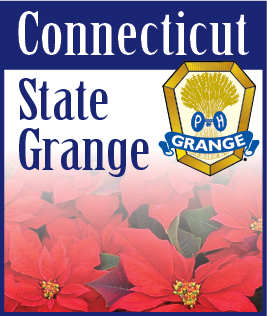| NOVEMBER 5, 2020 -- The spotted lanternfly, an invasive insect originally from parts of China, India, Vietnam and Taiwan, has made a re-appearance in Connecticut, posing a threat to local crops and forests and particularly harmful to apples and grapes. The brightly colored insects are about an inch long, half an inch wide with large wings. The lower wings are red with black dots and the abdomen is yellow with black bands.
The spotted lanternfly was first detected in the United States northwest of Philadelphia, Pennsylvania in September 2014 when it was confirmed by the PA. Dept. of Agriculture. Based on its host affinity, it was a threat to the State’s grapes, fruit trees and logging industries. They saw the greatest risk of spreading by people transporting materials that may contain egg masses laid on smooth bark, stone and other vertical surfaces. The Pa. Dept. of Agriculture issued a ban on the transport of items that could harbor the fly, including firewood, lawn mowers, outdoor furniture, trucks and RVs in November 2014.
States including Connecticut, Maryland, Delaware, New Jersey, New York, Virginia and West Virginia have all seen the entrance of the spotted Lanternfly. In Feb 2019, the Delaware Dept. of Agriculture signed emergency regulations enacting quarantine for this pest. There is great potential for this insect to infect almost all of the eastern part of the country.
The damage to trees and plants comes from the feeding on the sap from the trunk or branch. As it feeds the tree weeps sap which then attracts bees, ants, hornets and paper wasps which fosters a mold which could eventually result in the death of the tree. The favorite host tree is the Asian Ailanthus also known as the tree of heaven. It is recommended that local residents cut down this tree. As early as July the adults will mate and lay eggs from late September to the onset of winter. Kill eggs from October through May by scrapping them off of surfaces. Double bag them, or put in a zip lock bag and add alcohol or hand sanitizer to kill them. Infested trees should be treated with systemic pesticides from June to August. Tree injection and bark sprays should be applied by professional applicators that may use a soil drench and foliage spray. Homeowners can apply brown sticky traps at the base of the trunk to trap the young insects.
There seems to be no major damage so far in our state, but the Ct. Dept. of Agriculture feels there is potential for great harm to the states agri-business. |
